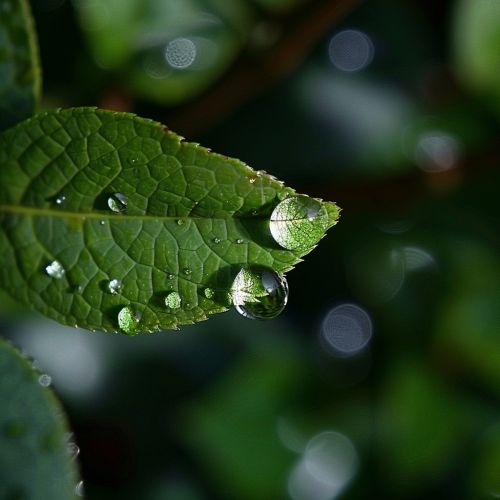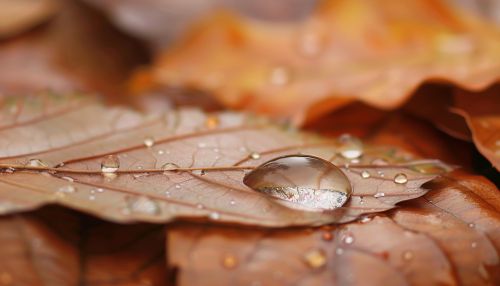Wetting
Introduction
Wetting is a fundamental phenomenon in the field of surface science, describing the interaction between a liquid and a solid surface. The degree to which a liquid spreads on a solid surface is determined by the balance of intermolecular forces at the interface. Wetting is crucial in various scientific and industrial processes, including coating, painting, printing, and lubrication. Understanding wetting behavior is essential for the development of advanced materials and technologies.
Theoretical Background
Surface Tension and Interfacial Energy
Surface tension is the force that acts on the surface of a liquid, causing it to minimize its surface area. It results from the cohesive forces between molecules in the liquid. Interfacial energy, on the other hand, is the energy associated with the interface between two phases, such as a liquid and a solid. The balance between surface tension and interfacial energy determines the wetting behavior of a liquid on a solid surface.
Young's Equation
Young's Equation describes the contact angle formed by a liquid droplet on a solid surface. The contact angle (θ) is defined by the balance of forces at the three-phase contact line, where the liquid, solid, and vapor phases meet. Young's Equation is given by:
\[ \gamma_{SV} = \gamma_{SL} + \gamma_{LV} \cos \theta \]
where: - \(\gamma_{SV}\) is the solid-vapor interfacial energy, - \(\gamma_{SL}\) is the solid-liquid interfacial energy, - \(\gamma_{LV}\) is the liquid-vapor surface tension.
The contact angle provides a measure of the wettability of the surface. A low contact angle indicates good wetting, while a high contact angle indicates poor wetting.
Types of Wetting
Complete Wetting
Complete wetting occurs when a liquid spreads entirely over a solid surface, forming a thin film. This behavior is observed when the solid-liquid interfacial energy is significantly lower than the solid-vapor interfacial energy. In this case, the contact angle approaches zero degrees.
Partial Wetting
Partial wetting is characterized by the formation of a droplet with a finite contact angle on the solid surface. This occurs when the solid-liquid and solid-vapor interfacial energies are comparable. The contact angle in partial wetting ranges between 0 and 180 degrees.
Non-Wetting
Non-wetting occurs when a liquid does not spread on a solid surface, resulting in a high contact angle. This behavior is observed when the solid-liquid interfacial energy is higher than the solid-vapor interfacial energy. The contact angle in non-wetting is typically greater than 90 degrees.


Factors Affecting Wetting
Surface Roughness
Surface roughness significantly influences wetting behavior. According to the Wenzel model, rough surfaces enhance wetting if the surface is inherently wetting and decrease wetting if the surface is inherently non-wetting. The Cassie-Baxter model describes the wetting of rough surfaces with air pockets trapped beneath the liquid, leading to a composite interface.
Surface Chemistry
The chemical composition of a surface affects its wettability. Hydrophilic surfaces, which have a high affinity for water, promote wetting, while hydrophobic surfaces, which repel water, inhibit wetting. Surface treatments, such as coating with hydrophobic or hydrophilic materials, can modify the wettability of a surface.
Temperature
Temperature affects the surface tension of a liquid and the interfacial energies, thereby influencing wetting behavior. Generally, increasing temperature decreases the surface tension of a liquid, leading to better wetting. However, the effect of temperature on interfacial energies must also be considered.
Liquid Properties
The properties of the liquid, such as viscosity, density, and polarity, play a crucial role in wetting behavior. Low-viscosity liquids spread more easily on surfaces, while high-viscosity liquids may resist spreading. Polar liquids, such as water, interact strongly with polar surfaces, enhancing wetting.
Applications of Wetting
Coating and Painting
Wetting is critical in coating and painting processes, where a liquid film must uniformly cover a solid surface. Proper wetting ensures adhesion, durability, and appearance of the coating. Surface treatments and additives are often used to control wetting behavior in these applications.
Printing
In printing, wetting determines the transfer of ink from the printing plate to the substrate. Good wetting ensures sharp and consistent print quality. The choice of ink and substrate, as well as surface treatments, are essential for achieving optimal wetting in printing processes.
Lubrication
Wetting plays a vital role in lubrication, where a liquid lubricant must spread over a solid surface to reduce friction and wear. The wettability of the lubricant on the surface affects the formation of a lubricating film and its performance under varying conditions.
Microfluidics
In microfluidic devices, wetting controls the movement and manipulation of small liquid volumes. The design of microchannels and the choice of materials are crucial for achieving desired wetting behavior and fluid control in these devices.
Advanced Topics in Wetting
Superhydrophobic Surfaces
Superhydrophobic surfaces exhibit extreme water repellency, with contact angles greater than 150 degrees. These surfaces are inspired by natural phenomena, such as the lotus leaf, and are created using micro- and nanoscale surface structures combined with hydrophobic coatings. Superhydrophobic surfaces have applications in self-cleaning materials, water-resistant coatings, and anti-icing surfaces.
Electrowetting
Electrowetting involves the use of an electric field to modify the wettability of a surface. By applying a voltage, the contact angle of a liquid droplet can be dynamically controlled. Electrowetting has applications in displays, lab-on-a-chip devices, and adaptive lenses.
Wetting Transitions
Wetting transitions refer to changes in wetting behavior due to external stimuli, such as temperature, pressure, or chemical environment. These transitions can be reversible or irreversible and are of interest in the design of smart surfaces and responsive materials.
